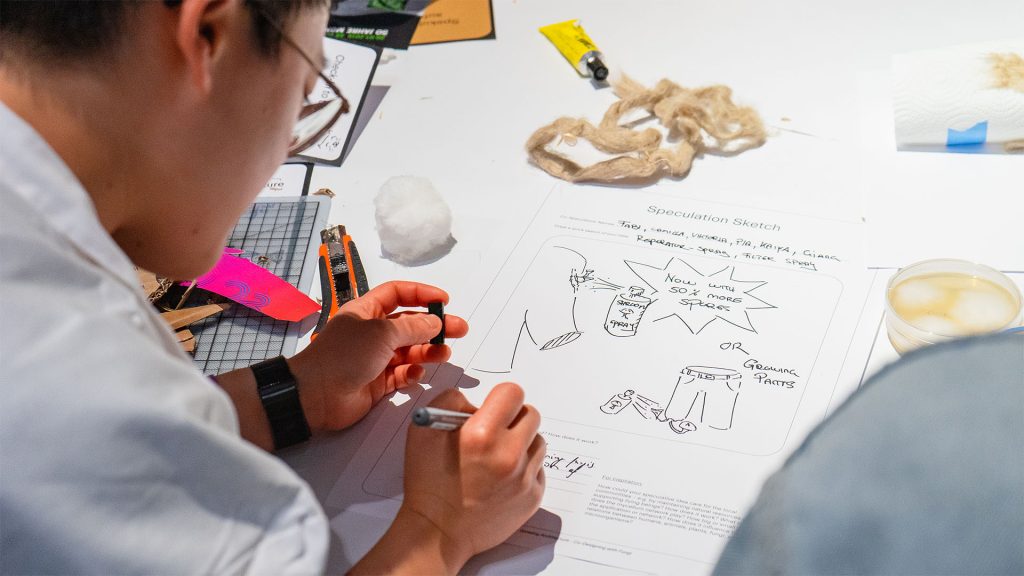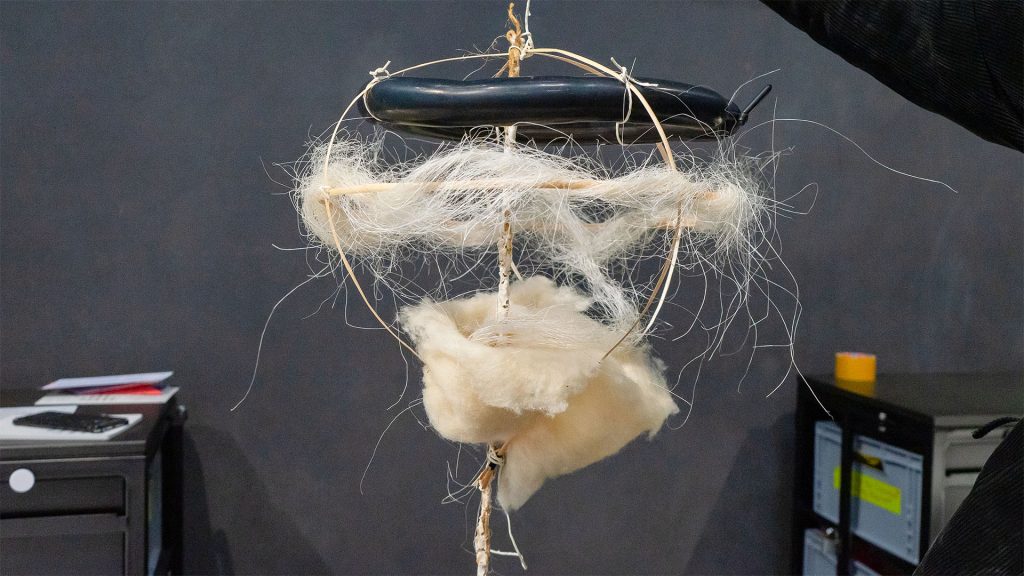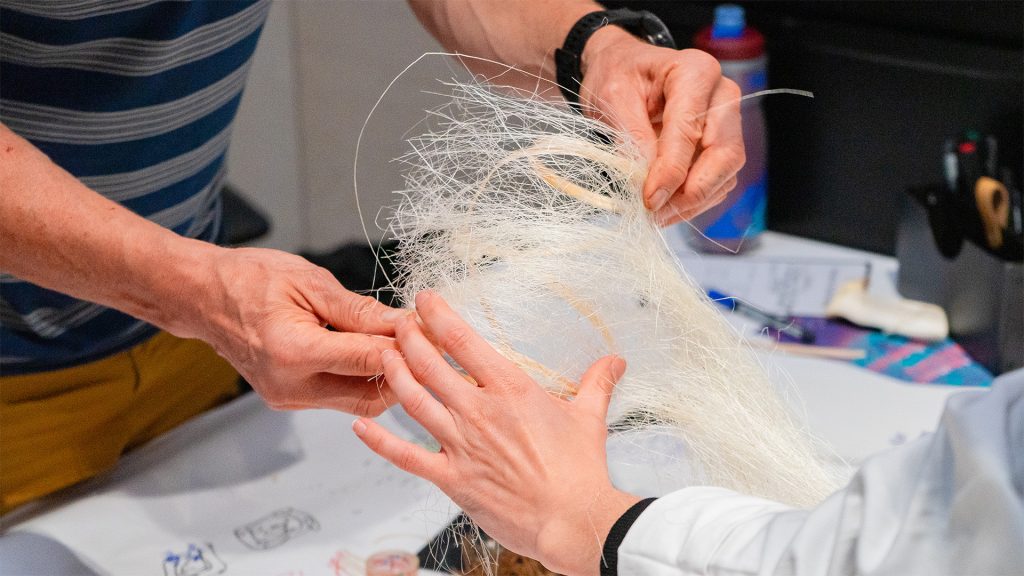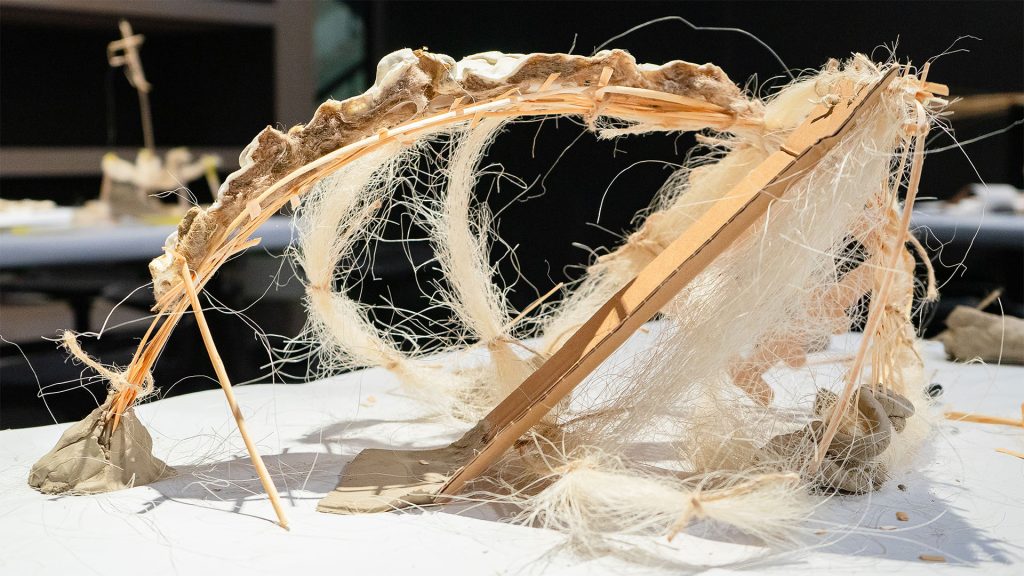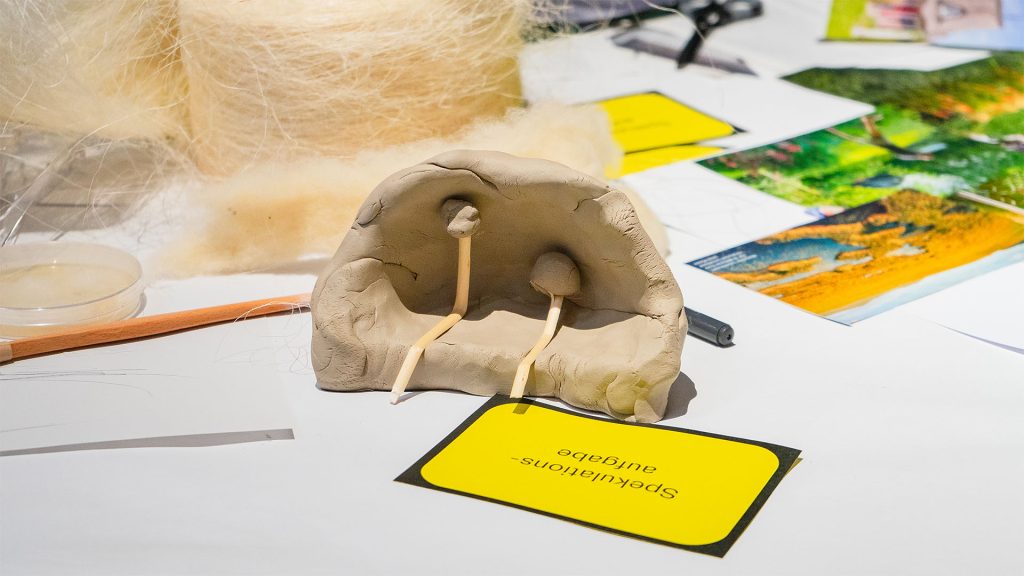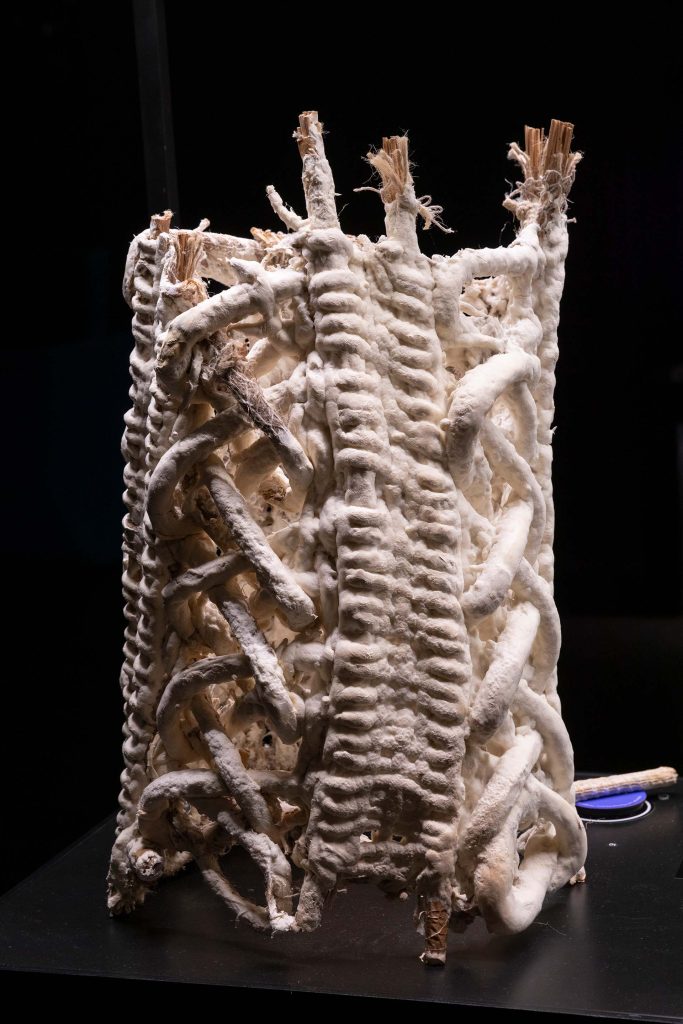
Das Projekt soll zeigen, wie andere Lebewesen unsere Lebensweise verändern können. Wir lernen von ihnen und arbeiten mit ihnen zusammen, um unsere Umwelt nachhaltig zu gestalten. Das Projekt schafft ein Gleichgewicht zwischen der Arbeit im Labor und den Bedürfnissen der Industrie sowie zwischen den Bedürfnissen der Pilze und denen von Architekt:innen. Ein besonderer Dank geht an das Team von Prof. Vera Meyer an der TU Berlin für die Unterstützung im Labor und bei der Erforschung von Fomes fomentarius.
Forschende:
Natalija Miodragović & Dimitra Almpani-Lekka, mit Unterstützung von Prof. Vera Meyer und dem Department für Angewandte und Molekulare Mikrobiologie der TU Berlin.
Strukturtextilien:
Natalija Miodragović, Nelli Singer, Daniel Suarez
Begleitendes Projekt: Object Space Agency


